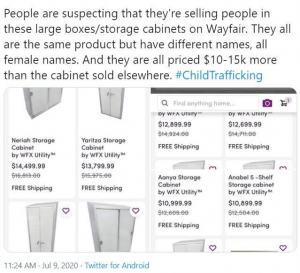Performative activism: it’s now cool to care, even if you really don’t

The black square. ‘Repost this to save the rainforest.’ The pretty little infographics that go with your ‘vibe.’ All of these things are the same, and have a name, performative activism. Performative activism can be defined as, “activism done to increase one’s social capital rather than because of one’s devotion to the cause.” This relatively new term has also been termed surface-level activism and slacktivism.
Infographics that are posted on social media, like Instagram, are just a small portion of information people need to learn in order to be a better activist, ally, and person. These images are generally infographics, aesthetically pleasing pictures, or quotes. Reposting these images without researching the cause behind it is as if you were telling a story without knowing it. These images bear a stronger meaning than a repost; they are telling people of a story that we all need to know, of a cause that we need to support. Whether this cause is to save the rainforest or Black Lives Matter, infographics and cartoons are important, but only if you understand the meaning behind them, and educate others of their importance.
While infographics are commonly linked with performative activism, it is still important to spread information in any way possible. Spreading these messages is important, but only if you know what you are talking about. The best infographics make you want to learn more about the topic in order to educate yourself and others about the topic. Infographics without true meaning can be considered a form of performative activism.

There are many forms of performative activism throughout our daily lives. Anything that is showing the world that you care to be ‘cooler’ during this, ‘trend,’ is performative activism. A prime example of performative activism was Blackout Tuesday. On June 2nd, 2020, supporters were supposed to post a black square to reflect on the then recent acts of police brutality and discriminatoin, that was and is prevalent in our culture. and halt any other social media posts. This was begun by the music industry as they were supposed to not release music and stop posting. On Blackout Tuesday, Instagram was flooded with pictures of black squares. This quickly blacked out the tag for Black Lives Matter, effectively blocking all other posts made, along with infographics.
That day was a day of performative activism. No speaking out. No education. Just a black square and a few hashtags to show that you care. This entire day was showing the world that you’re a good person, rather than doing good. This day was where performative activism reared its ugly head to show that some people were treating Black Lives Matter as a trend.
Some posts that circle around social media are not even accurate, yet they are reposted because of many performative activists thinking they are doing good. In fact, infographics can spread false information. A prime example of false infographics is the Wayfair human trafficking scandal. In this well-spread conspiracy theory, Wayfair was accused of trafficking children, but it was found to be a baseless claim.
Part of performative activism is not researching what you post, and false infographics are just a piece of it. False infographics and rumors are constantly circling around the internet, so you should research and verify the information before you share it. Fast Company published a great article on the many ways to spot a false infographic.

According to an MIT study by Professor Sinan Aral and Deb Roy, false information spreads quicker than true information, especially by social media. The professors found that misinformation is 70% more likely to be retweeted on Twitter than real news. In addition, the post will reach its first 1,500 six times faster than others. This study shows how careful we must be by reposting and retweeting information.
Spreading false information is not just done by infographics and tweets, it can be done by talking to friends and family. Some misinformation can be spread as quickly as a text or a phone call. Educating friends and family is part of activism, but understanding the knowledge for ourselves before sharing is far more important.
When posting on social media, it is crucial to understand what you are posting. If you see misinformation, it is important to report the post and learn more about this topic. Holding your friends and family accountable for spreading misinformation is important too. Educating others is a formative part of being an activist. Helping others to be better informed, even with a view you don’t agree with, is part of being an activist and an overall better person.
Activism is defined by the Cambridge dictionary as, “the use of direct and noticeable action to achieve a result, usually a political or social one.” Reposting false information and posting infographics is not commonly considered the use of direct and noticeable action. Doing these things is part of a larger action that needs to be done to achieve your goal.
Performative activism is a way for people to think they are ‘cool’ by saying that they support causes that they don’t know anything about. Supporting Black Lives Matter means nothing if you aren’t doing anything about it. Activism is an everyday activity. You can’t just stop supporting a cause during your day to call another kid a f*g, then post on your story about the rising suicide rates in the LGBTQ+ community.
Without educating others and yourself, you can fall into the category of performative activism. There are so many more things you can do to spread awareness rather than just reposting infographics. They are an effective way to spread the message, but you must do more to truly support a cause. Petitions, rallies, and educating yourself and others are great ways to show your support for these causes.
Reposting things you don’t understand, not working on yourself, perpetuating behaviors, not listening to others, and signing petitions with no intent to help or knowledge of why you did so, these are just a few of the actions that could be considered performative activism. These behaviors make you a part of the problem. Before you do any of these things, think: “Would these help my cause? Or am I just caring to be a cooler person, not a better one?”
Some petitions to sign and make an actual difference are:
Take Action Against Climate Change
Black Lives Matter – Defund the Police
Save Wrongly Accused Dustin Higgs
Declare The Proud Boys A Terrorist Organization
Abolish Anti-LGBTQ+ Laws In Poland
The Kentucky Youth Mental Health Protection Act – Outlaw Conversion Therapy in Kentucky

Sloan Markin is a sophomore who has always wanted to be a member of an official newspaper staff. She is thriving in her first year with the NL: “I am...




